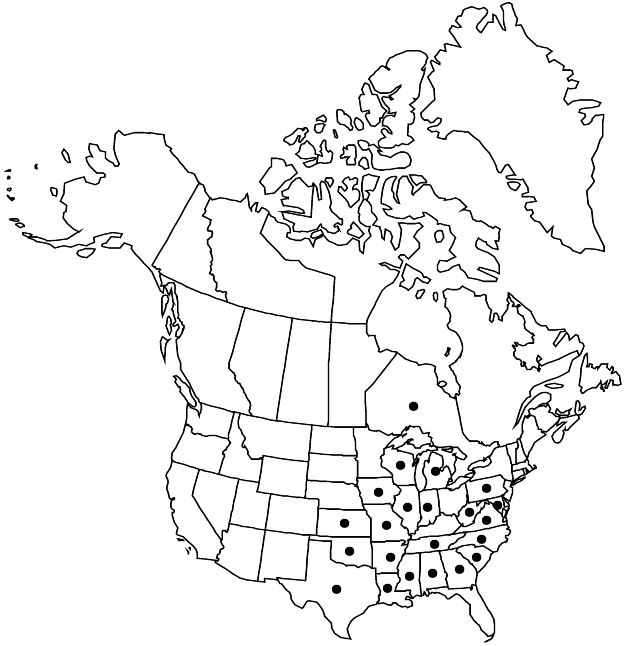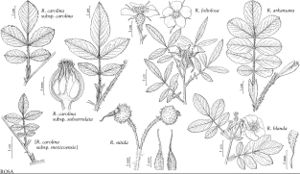Difference between revisions of "Rosa carolina subsp. subserrulata"
Novon 18: 195. 2008.
FNA>Volume Importer |
FNA>Volume Importer |
(No difference)
| |
Revision as of 20:35, 24 September 2019
Stems erect, robust; infrastipular prickles subulate or stout, mixed with dense, shorter internodal prickles, aciculi, and sparse stipitate glands to apices. 2n = 28.
Phenology: Flowering May–Jul.
Habitat: Dry wooded slopes, hillside thickets, rocky hills, upland woods, cherty upper slopes, sandstone glades, prairies
Elevation: 100–1100 m
Distribution

Ont., Ala., Ark., Ga., Ill., Ind., Iowa, Kans., La., Md., Mich., Miss., Mo., N.C., Okla., Pa., S.C., Tenn., Tex., Va., W.Va., Wis.
Discussion
Subspecies subserrulata is distinguished by relatively short, stout, erect stems armed with paired, subulate or stout, long, infrastipular prickles together with shorter prickles, aciculi, and stipitate glands to stem apices. It is most common in the Midwest with an epicenter in drier habitats of the Ozark Plateau, where it is particularly common in Arkansas, eastern Kansas, Missouri, eastern Oklahoma, and northeastern Texas. This range corresponds to the Illinoian Floristic Subprovince and, in part, the Appalachian Subprovince, where both subspecies occur.
Selected References
None.
